Related Research Articles

Andrew Pickens Jr. was an American soldier and politician. He served as the 46th Governor of South Carolina from 1816 until 1818.
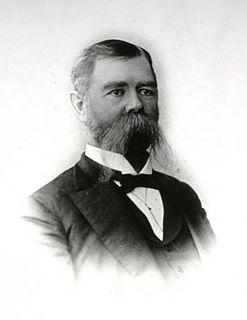
Elias Carr was an American planter, lawyer, and politician who served as the 48th Governor of the U.S. state of North Carolina from 1893 to 1897. A building on the campus of the University of North Carolina at Chapel Hill is named after him.

William Alexander Graham was a United States Senator from North Carolina from 1840 to 1843, a Senator later in the Confederate States Senate from 1864 to 1865, the 30th Governor of North Carolina from 1845 to 1849 and U.S. Secretary of the Navy from 1850 to 1852, under President Millard Fillmore. He was the Whig Party nominee for vice-president in 1852 on a ticket with General Winfield Scott.
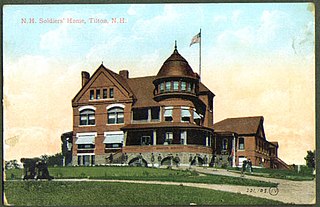
An old soldiers' home is a military veterans' retirement home, nursing home, or hospital, or sometimes an institution for the care of the widows and orphans of a nation's soldiers, sailors, and marines, etc.

John Floyd was an American politician and brigadier general in the First Brigade of Georgia Militia in the War of 1812. One of the largest landowners and wealthiest men in Camden County, Georgia, Floyd also served in the Georgia House of Representatives, as well as the US House of Representatives.
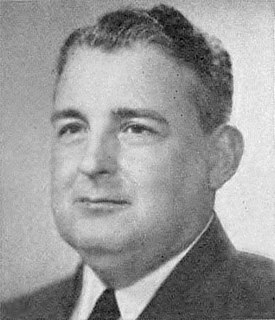
William Munford Tuck was an American lawyer and lieutenant in the Byrd Organization, who served as the 55th Governor of Virginia from 1946 to 1950 as a Democrat, and as a U.S. Congressman from 1953 until 1969.
Wade Hampton II was an American politician, plantation owner, and soldier in the War of 1812. He was a member of the Hampton family, whose influence was strong in South Carolina politics and social circles for nearly 100 years.

Thomas Bothwell Jeter was the 79th Governor of South Carolina from September 1, 1880 to November 30, 1880. His home in Union, South Carolina is listed on the National Register of Historic Places.
Singleton's Graveyard is an historic plantation cemetery located off SC 261 in the High Hills of Santee, 6 miles south of Wedgefield, South Carolina. On May 13, 1976, it was added to the National Register of Historic Places.

The McMaster School, built in 1911, is an historic building located at 1106 Pickens Street on the corner of Senate Street in Columbia, South Carolina. It was designed by noted Columbia architect William Augustus Edwards of the firm of Edwards and Walter. Edwards and his partner, Frank C. Walter, designed sixteen schools according to standardized guidelines established by the state legislature in 1905. The architects chose a Renaissance Revival style with H-shaped floor plans used as the standard for the state in buildings designed and constructed by other architects. The State newspaper declared it the "handsomest school building in Columbia" when it opened in 1911.

The Callaway Plantation, also known as the Arnold-Callaway Plantation, is a set of historical buildings, and an open-air museum located in Washington, Georgia. The site was formerly a working cotton plantation with enslaved African Americans. The site was owned by the Callaway family between 1785 until 1977; however, the family still owns a considerable amount of acreage surrounding the Callaway Plantation. When The plantation was active, it was large in size and owned several hundred slaves.

Millwood is the site and ruins of an antebellum plantation house at 6100 Garner's Ferry Road, Columbia, South Carolina. Owned by Colonel Wade Hampton II and his wife Ann Fitzsimmons Hampton, it was the boyhood home of their first son Wade Hampton III and other children. He later became a Confederate general and later, South Carolina governor, and U.S. Senator.

The First Presbyterian Church is a historic church building in Columbia, South Carolina. Constructed in 1854, it was added to the National Register of Historic Places on January 25, 1971.
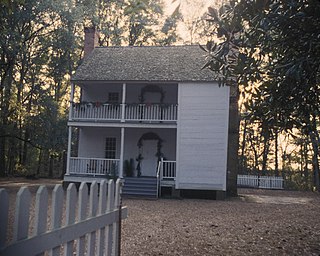
Harmony Hall Plantation, located in White Oak, is one of the oldest residences in North Carolina

William Bull was a landowner and politician in the Province of South Carolina.
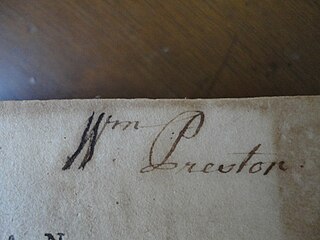
Colonel William Preston played a crucial role in surveying and developing the western colonies, exerted great influence in the colonial affairs of his time, enslaved many people on his plantation, and founded a dynasty whose progeny would supply leaders of the South for nearly a century. He served in the Virginia House of Burgesses and was a colonel in the militia during the American Revolutionary War. He was one of the fifteen signatories of the Fincastle Resolutions.
Hopkins Family Cemetery is a historic family cemetery located near Hopkins, Richland County, South Carolina. It was established about 1775, on the Back Swamp Plantation. A wall and stile were built about 1835–1837. It contains 69 marked graves of the Hopkins and related families.
William Beverley (1696–1756) was an 18th-century legislator, civil servant, planter and landowner in the Colony of Virginia. Born in Virginia, Beverley—the son of planter and historian Robert Beverley, Jr. and his wife, Ursula Byrd Beverley (1681–1698)—was the scion of two prominent Virginia families. He was the nephew of Peter Beverley (1668–1728), Speaker of the Virginia House of Burgesses, and the grandson of wealthy Virginia planter William Byrd I (1652–1704) of Westover Plantation. Beverley's mother died shortly before her 17th birthday, and he was sent to England.
William Henry Cain was an American plantation owner and politician; he served as the lieutenant governor of South Carolina from 1846-8.
References
- ↑ Green, Edwin Luther (June 11, 1916). "A History of the University of South Carolina". State Company – via Google Books.
- ↑ http://www.richlandcountysc.gov/Portals/0/Departments/PublicInformationOffice/Docs/BriefHistoryOf%20Richland%20County.pdf [ bare URL PDF ]
- ↑ Mary, College of William and (June 11, 1900). "William and Mary College Quarterly Historical Magazine". William and Mary College. – via Google Books.
- 1 2 3 4 http://www.nationalregister.sc.gov/richland/S10817740150/S10817740150.pdf Hopkins Family Cemetery National Register of Historic Places nomination form